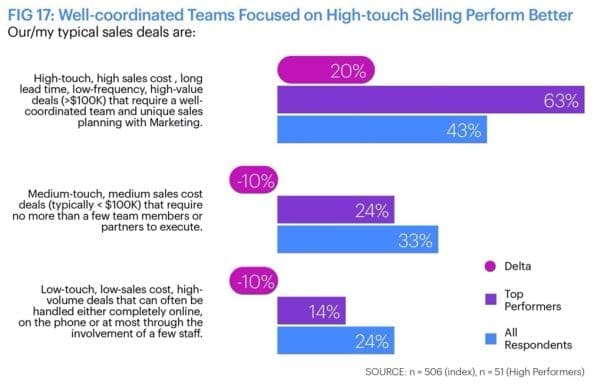BLOG
How Prepared Are You For Digital Selling?
Our research shows companies are moving toward digital selling techniques faster than they’d planned.
Sales teams have had a tough year. The forced push into selling virtually through tools like social media and video conferencing have disrupted both sellers’ sales funnels and their customers’ journey. We’ve developed a tool to help you quickly assess your organization’s digital selling readiness for the key capabilities used by top performing sales organizations discovered in our 2020 State of Digital Selling research report. You don’t have to be in sales to find this useful: marketers will play a key supporting role in the digital transformation of the sales organizations they support.
Sales have watched for years (largely on the sidelines) as the influence of B2C e-commerce changed the expectations of B2B buyers, who now increasingly favor seamless digital experiences that make their lives easier. Many sales teams polished their LinkedIn profiles to engage prospects in the digital landscape only to realize that without great content and integration with backend CRM and SFA systems, those profiles are hollow attempts at transformation. Post-COVID, don’t expect selling practices to go back to “normal,” because there’s no undoing the changes in buyer and seller behavior the global pandemic has caused.
“Post-COVID, don’t expect selling practices to go back to “normal,” because there’s no undoing the changes in buyer and seller behavior the global pandemic has caused.”
Our 2020 State of Digital Selling global research report found that 73% of surveyed sales organizations will transition to digital selling techniques faster than planned. And McKinsey’s research found “Looking forward, B2B companies see digital interactions as two to three times more important to their customers than traditional sales interactions.” The question our research sought to answer is which capabilities are needed (and most important) to digitally transform sales.
What is Digital Selling?
Like any technology disruption, defining it in the early phases of adoption can be tricky. It’s sure to evolve as seller and buyer behavior continues to change. Here’s a starting point:
Digital Selling is the use of technology-focused commerce practices to meet the needs of digitally savvy buyers and by sellers to seamlessly integrate the sales funnel across marketing, sales and service.
Just as marketing has transformed into a technology and analytics-lead discipline, the digital transformation of sales is underway to position sales as an equal digital partner.
Don’t think of digital selling as entirely end-to-end virtual or digital experiences, but rather a practice that finds the right balance of the complementary offline and online forces. Our research found that top-performing sales organizations combine the human touch needed to influence and sell with digital enablement tools and analytics that give them a significant edge in key sales metrics, including win rates, quota achievement and customer satisfaction. In fact, the best sales team practices were based on the digitization of the Key Accounts sales model, in which a cross-function team of marketers, sellers and service pros focus on key account wins (see chart below).

FINAL THOUGHTS
Which digital practices make a difference?
In our research, we chose to study the digital transformation of sales from the perspective of the capabilities a sales organization needs to succeed.
The report breaks down each of these capabilities further into sub-capabilities that again show the gap between top performers against the industry average.